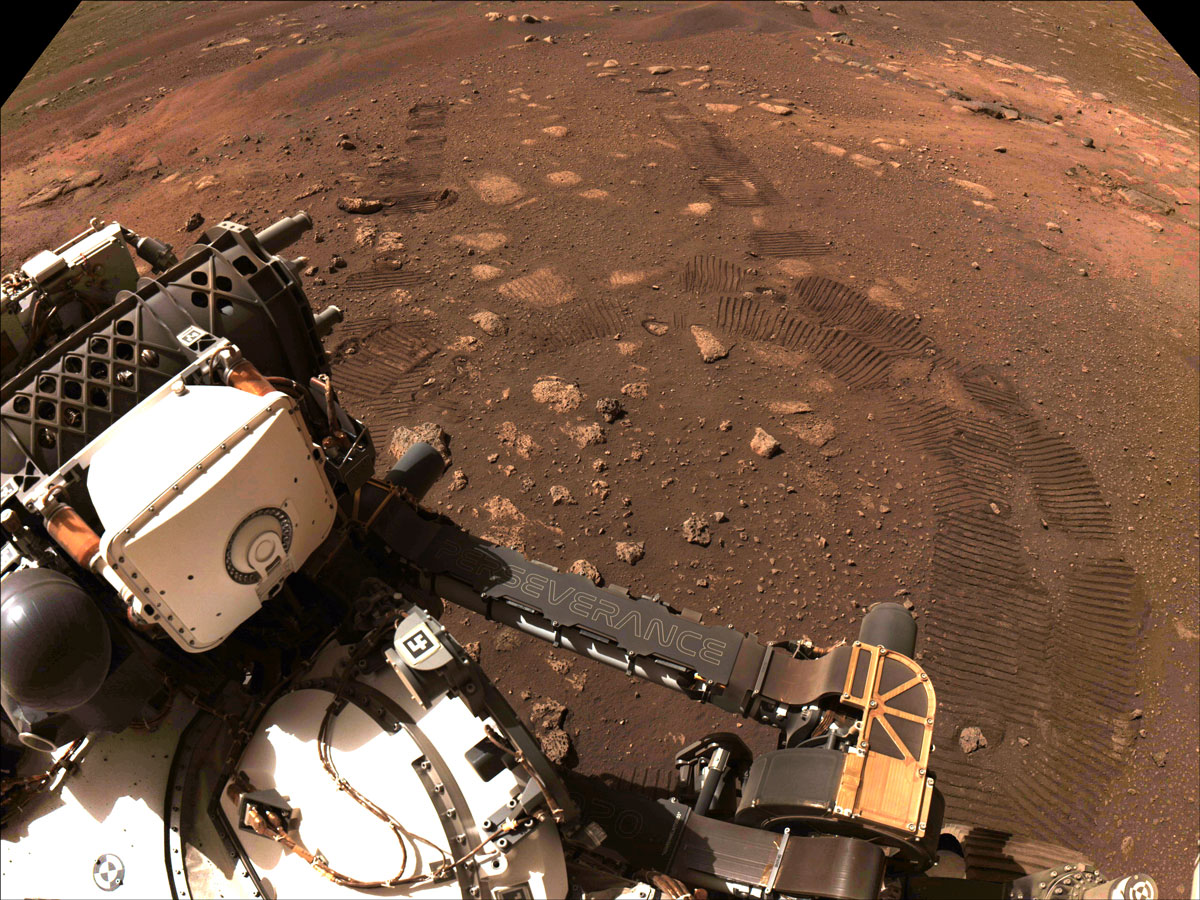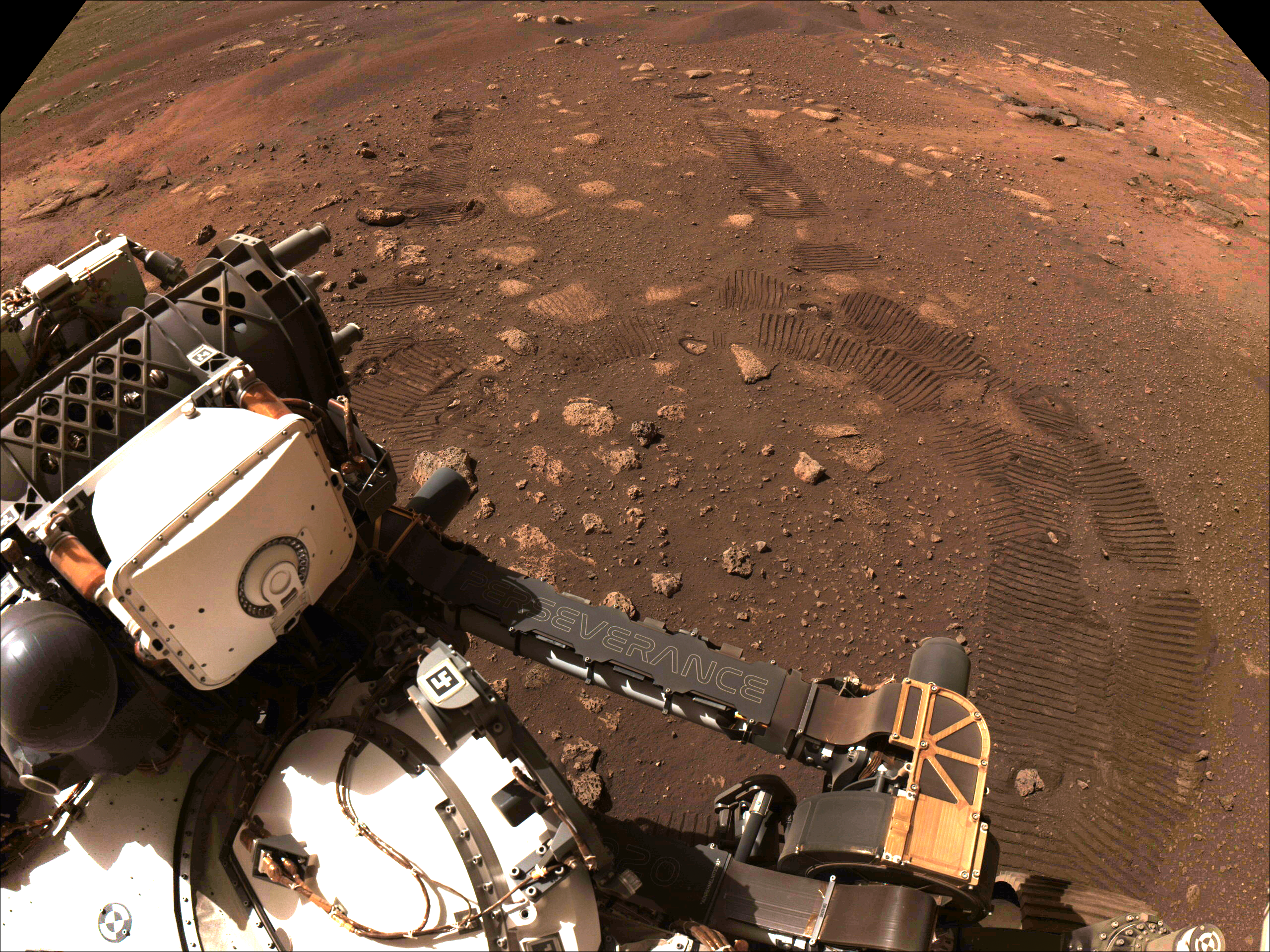Perseverance Is Roving on Mars

| Credit | NASA/JPL-Caltech |
|---|---|
| Language |
|
This image was taken during the first drive of NASA’s Perseverance rover on Mars on March 4, 2021. Perseverance landed on Feb. 18, 2021, and the team has been spending the weeks since landing checking out the rover to prepare for surface operations. This image was taken by the rover’s Navigation Cameras.
A key objective for Perseverance’s mission on Mars is astrobiology, including the search for signs of ancient microbial life. The rover will characterize the planet’s geology and past climate, pave the way for human exploration of the Red Planet, and be the first mission to collect and cache Martian rock and regolith (broken rock and dust).
Subsequent NASA missions, in cooperation with ESA (European Space Agency), would send spacecraft to Mars to collect these sealed samples from the surface and return them to Earth for in-depth analysis.
The Mars 2020 Perseverance mission is part of NASA’s Moon to Mars exploration approach, which includes Artemis missions to the Moon that will help prepare for human exploration of the Red Planet.
NASA’s Jet Propulsion Laboratory, which is managed for NASA by Caltech in Pasadena, California, built and manages operations of the Perseverance rover.
For more about Perseverance: mars.nasa.gov/mars2020/

